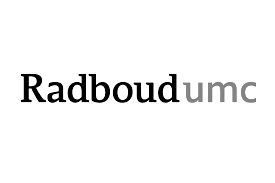Proclaimer
LANZ is responsible for the content of this website and does its utmost to display all information correctly and completely. Is something not correct or is something not working properly? Then let me know and send me an email. I would like to search together for a good solution.

Do it yourself
Most people are willing to change, but do not want to be changed. Understanding why change is necessary and acquiring additional knowledge or new behaviours on your own accord is much more enjoyable and effective. This proves to be the case also at a healthcare company struggling with an absenteeism rate of 20%. A series of measures and training courses aimed at increasing employee vitality have not produced the desired effect. As LANZ, I am tasked with looking for the causes of the high absenteeism.

- Step 1
- Step 2
- Step 3
-
Step 1
Transparency
What are the hard and soft factors influencing the current situation? Critical look at the status quo. -
Step 2
Autonomy
How can we break through the status quo? Explore everyone's capabilities to influence the status quo. -
Step 3
Ownership
How can we keep up the movement? Coaching and supervision to keep moving together.
Make time
Starting from what affects people, and not just from rules and regulations. It is a proven change management approach that delivers quick results in a short time, as confirmed by the case study on sick leave. Going through the following three steps with employees who were at that time, have been or were struggling with sickness absence, already provided valuable insights after the first workshop.
Step 1 Exploring
Together, we map out the context. What is the situation and who is involved, respectively what do they mean by vitality and what are the participants’ needs and obstacles in their daily routine.
Step 2 Defining
We highlight all topics. What are the typical views and backgrounds, respectively how is the average participant in the game and what are his or her challenges. Following this, the help question is sharply derived.
Step 3 Creating
We prioritise and search for change options together. What are the alternatives to the current situation, respectively what are concrete measures.
A new direction
Save time
Two representatives from the participants from the first workshop presented initial insights and concrete measures to management. Together with management, they are tested for desirability, feasibility and cost-effectiveness. For the ideas, which best meet the criteria, employees developed and tested prototypes. Critical, large-scale testing supported the further development into services and products, which were widely received by the organisation, and therefore could easily be incorporated. Management was informed of progress at regular intervals and made adjustments where necessary. At-risk groups received preventive training on load and strain capacity.
Result
Organisation-wide awareness of vitality, including improvement of the process for receiving and channelling signals of declining vitality, led to a 60% reduction in absenteeism due to illness. Insight that vitality is also influenced by the domestic circumstances and more ownership must be transferred to the employees.
Net time spent by client
3 workshops, 3 reviews and retrospectives, create awareness at all employees by sharing the insights of the workshops, 2 preventive training sessions.
Also want to unravel a persistent pattern? Get in touch!

BOFfertjes
factory
®
.now
Lanz Organisatie & Advies BV
Van Pallandtstraat 45
NL • 6814 GN Arnhem
+31 (0)6 2096 3032
alex@lanz.org
lanz.org
KvK Arnhem: 50588664
BTW: NL 8228 22623 B01


